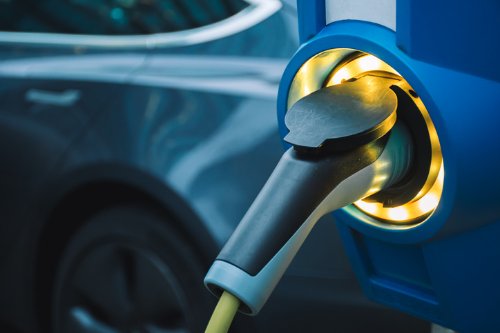Articles
Is now the time for an EV or hybrid?
June 29, 2022
by PEMCO Insurance
 Like a lot of drivers, your last trip to the gas pump may have left you wondering if it’s time to switch to an electric vehicle (EV) or hybrid. And if so, which is best?
Like a lot of drivers, your last trip to the gas pump may have left you wondering if it’s time to switch to an electric vehicle (EV) or hybrid. And if so, which is best? The answer: It mostly depends on how and where you drive.
What’s the difference between an EV and hybrid?
Options can be confusing for car buyers because many people use “electric car” to refer to any vehicle that doesn’t run solely on gas or diesel. Actually, there are three types of electric cars:Electric vehicle/battery electric vehicle (EV/BEV). Purely electric cars have a battery instead of a gasoline tank and an electric motor instead of an internal combustion engine. In addition to regenerative braking (more on that below) they rely on external charging as their power source, either at a home charging port or a community charging station. Range-per-charge varies by model, use and even environmental conditions. It can be more than 400 miles, but typically closer to 200.
Plug-in hybrid vehicle (PHEV). These cars have an electric motor, battery, internal combustion engine and a gas tank. They plug in to charge. Initially, they run on electric power and switch to gas once their charge is exhausted (40 miles is a common range). They’re more fuel efficient than a non-plug in hybrid, since for most people, that 40-mile range covers typical daily driving without dipping into their fuel reserve.
Hybrid vehicle (sometimes called “series” or “parallel” hybrids). These cars have an electric motor, battery, internal combustion engine and a gas tank, but they don’t plug in to charge. The electric motor and battery assist the gasoline engine, particularly at lower speeds. The gasoline engine kicks in at higher speeds and the electric motor charges through regenerative braking (EVs and PHEVs charge that way, too, in addition to external charging.) While hybrids don’t match the energy efficiency of EVs or PHEVs, they do very well in low-speed city driving that’s mostly powered by the battery. They also don’t have the EV or PHEV concerns about charger availability, important for long-distance and rural drivers and people who can’t charge their cars at work or install a home charger.
PEMCO began migrating to an eco-conscious fleet in 2019, when we reduced the size of our company car fleet by 40% and, for the remaining vehicles, moved to four-cylinder EcoBoost engines, with an evolution to hybrid/electric and flex fuel. (Work from home and virtual property inspections has reduced our fleet use even further.)
How much money would I save?
Hybrids save at the pump thanks to the time they spend running on electricity and, for a gasless EV, Investopedia estimates home charging adds $30 to $60 per month to drivers’ electric bills. But fuel savings tell just part of a somewhat complicated cost story, particularly when comparing to a gasoline-powered vehicle.A new EV costs about $10,000 more to purchase than the industry average, according to United States Natural Resources Defense Council, although that number is likely to shrink as manufacturers ramp up EV production and battery technology improves.
State and federal tax credit incentives apply for some EV and hybrid vehicles, including in Washington and Oregon. Model and/or price restrictions apply, so you’ll get the best deal if you can be flexible on the car you choose. Under the federal program, for example, you can qualify for up to $7,500 in federal tax credits on select cars.
Maintenance and vehicle longevity are another area where EV owners can save. Consumer Reports said EV and PHEV drivers saved 50% on repair and maintenance costs when averaged over a typical vehicle lifetime, compared with gas-powered cars. Generally, maintenance is simpler on an EV because they don’t require service for oil changes, fuel filters, timing belts, mufflers and more. However, if the battery goes bad on an EV and it’s past its warranty coverage, out-of-pocket replacement is costly – $13,000 to $20,000 on Tesla models, for example.
Do EVs and hybrids make that much environmental difference?
The “lifecycle emissions” of EVs and hybrids are lower than traditional gasoline-fueled vehicles, when weighing direct emissions (what comes out of the tailpipe or is emitted into the air through fueling and evaporation) and manufacturing impacts (raw material resources, transport and disposal).The degree of reduction varies region to region depending on how electricity is generated – cleaner hydro in the Northwest, for example, versus coal-fueled in other parts of the country. For EVs produced in 2020 and driven about 155,000 miles, Bloomberg research found the overall reduction in carbon dioxide emissions ranged from 18 to 87% compared to internal combustion vehicles.
Where is the U.S. headed when it comes to EVs?
Currently, 7% of U.S. drivers own an EV or hybrid, and an additional 39% say they’re at least somewhat likely to consider buying one for their next car, according to Pew Research Center. Their popularity is concentrated in urban areas where driving distances tend to be shorter and public charging stations more plentiful.The U.S. has set a goal for EVs to make up half of new auto sales by 2030. As part of that, the federal government has committed to improving the availability of chargers nationwide.
More to consider when trying to save on transportation
Visit our Blog for articles like these: super-saving tips to stretch your gas mileage, it’s (mostly) OK to pass on premium and how to buy a car from an auto dealership.Share on social media